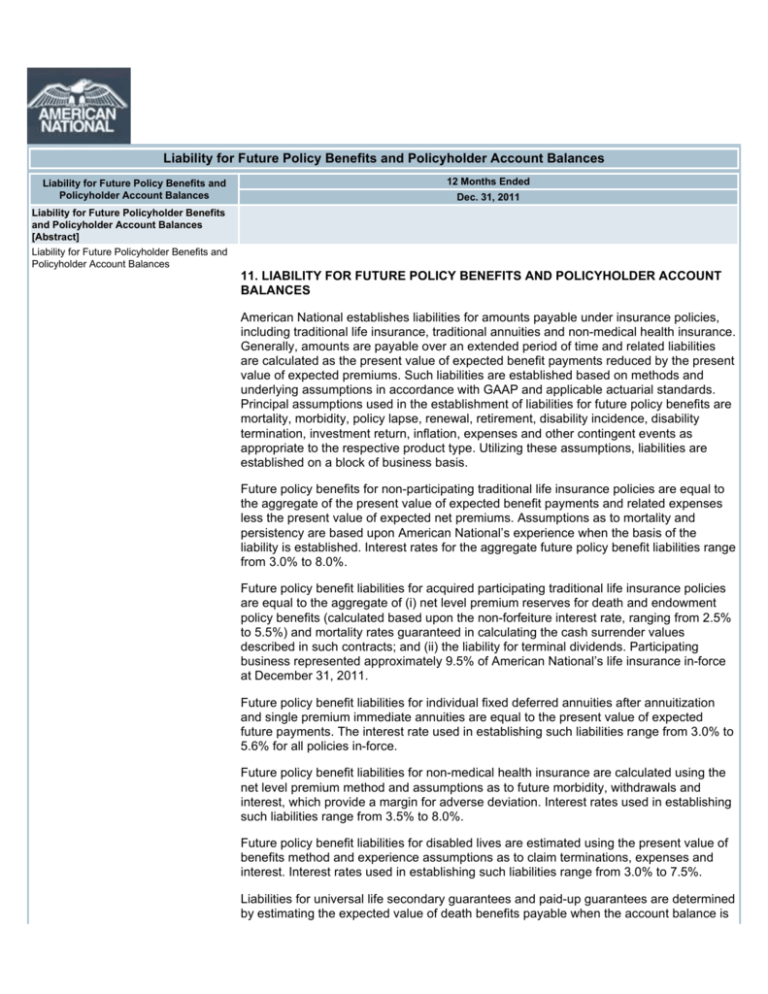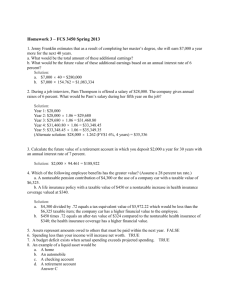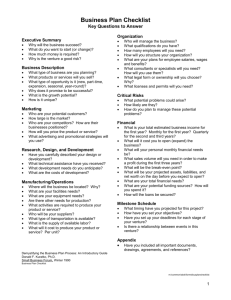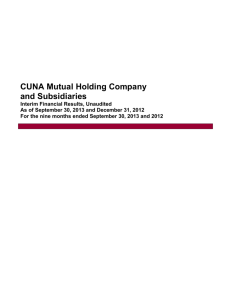Liability for Future Policy Benefits and Policyholder Account Balances
advertisement

Liability for Future Policy Benefits and Policyholder Account Balances Liability for Future Policy Benefits and Policyholder Account Balances 12 Months Ended Dec. 31, 2011 Liability for Future Policyholder Benefits and Policyholder Account Balances [Abstract] Liability for Future Policyholder Benefits and Policyholder Account Balances 11. LIABILITY FOR FUTURE POLICY BENEFITS AND POLICYHOLDER ACCOUNT BALANCES American National establishes liabilities for amounts payable under insurance policies, including traditional life insurance, traditional annuities and non-medical health insurance. Generally, amounts are payable over an extended period of time and related liabilities are calculated as the present value of expected benefit payments reduced by the present value of expected premiums. Such liabilities are established based on methods and underlying assumptions in accordance with GAAP and applicable actuarial standards. Principal assumptions used in the establishment of liabilities for future policy benefits are mortality, morbidity, policy lapse, renewal, retirement, disability incidence, disability termination, investment return, inflation, expenses and other contingent events as appropriate to the respective product type. Utilizing these assumptions, liabilities are established on a block of business basis. Future policy benefits for non-participating traditional life insurance policies are equal to the aggregate of the present value of expected benefit payments and related expenses less the present value of expected net premiums. Assumptions as to mortality and persistency are based upon American National’s experience when the basis of the liability is established. Interest rates for the aggregate future policy benefit liabilities range from 3.0% to 8.0%. Future policy benefit liabilities for acquired participating traditional life insurance policies are equal to the aggregate of (i) net level premium reserves for death and endowment policy benefits (calculated based upon the non-forfeiture interest rate, ranging from 2.5% to 5.5%) and mortality rates guaranteed in calculating the cash surrender values described in such contracts; and (ii) the liability for terminal dividends. Participating business represented approximately 9.5% of American National’s life insurance in-force at December 31, 2011. Future policy benefit liabilities for individual fixed deferred annuities after annuitization and single premium immediate annuities are equal to the present value of expected future payments. The interest rate used in establishing such liabilities range from 3.0% to 5.6% for all policies in-force. Future policy benefit liabilities for non-medical health insurance are calculated using the net level premium method and assumptions as to future morbidity, withdrawals and interest, which provide a margin for adverse deviation. Interest rates used in establishing such liabilities range from 3.5% to 8.0%. Future policy benefit liabilities for disabled lives are estimated using the present value of benefits method and experience assumptions as to claim terminations, expenses and interest. Interest rates used in establishing such liabilities range from 3.0% to 7.5%. Liabilities for universal life secondary guarantees and paid-up guarantees are determined by estimating the expected value of death benefits payable when the account balance is projected to be zero and recognizing those benefits ratably over the accumulation period based on total expected assessments. American National regularly evaluates estimates used and adjusts the additional liability balances, with a related charge or credit to benefit expense, if actual experience or other evidence suggests that earlier assumptions should be revised. The assumptions used in estimating the secondary and paid-up guarantee liabilities are consistent with those used for amortizing DAC, and are thus subject to the same variability and risk. The assumptions of investment performance and volatility for variable products are consistent with historical Standard & Poor’s experience. The benefits used in calculating the liabilities are based on the average benefits payable over a range of scenarios. American National periodically reviews its estimates of actuarial liabilities for future policy benefits and compares them with its actual experience. Differences between actual experience and the assumptions used in pricing these policies, guarantees and riders and in the establishment of the related liabilities result in variances in profit and could result in losses. The effects of changes in such estimated liabilities are included in the results of operations in the period in which the changes occur. Policyholder account balances relate to investment-type contracts and universal life-type policies. Investment-type contracts principally include traditional individual fixed annuities in the accumulation phase and non-variable group annuity contracts. Policyholder account balances are equal to (i) policy account values, which consist of an accumulation of gross premium payments; (ii) credited interest, ranging from 1.0% to 8.0% (some annuities also offer a first year bonus ranging from 2.0% to 5.5%), less expenses, mortality charges, and withdrawals; and (iii) fair value adjustments relating to business combinations. December 31, 2012 Form 10-K • XBRL Rendering • Last update 3.7.2012








